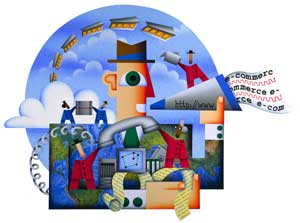|
|
|
 |
|
|
U.S.
Economy >
Basic Conditions & Resources |
|
The
first ingredient of a nation's economic system is its natural resources.
The United States is rich in mineral resources and fertile farm soil,
and it is blessed with a moderate climate. The second ingredient is
labor, which converts natural resources into goods. The number of available
workers and, more importantly, their productivity help determine the
health of an economy. Labor-force quality continues to be an important
issue. Today, Americans consider "human capital" a key to success in
numerous modern, high-technology industries. As a result, government
leaders and business officials increasingly stress the importance of
education and training to develop workers with the kind of nimble minds
and adaptable skills needed in new industries such as computers and
telecommunications. |
|||
| Texts
are abridged from U.S. State Department IIP
publications and other U.S. government materials. |
|||
| What
kind of information materials are available?
CD: These documents are available in fulltext format on the About the USA CD-ROM. Teachers: Request a copy for classroom use. L: Selected documents are available in German as well as other languages, including Arabic, Chinese, French, Spanish, Persian and Turkish. |
DISCLAIMER
Any reference obtained from this server to a specific commercial product, process, or service does not constitute or imply an endorsement by the United States Government of the product, process, or service, or its producer or provider. The views and opinions expressed in any referenced document do not necessarily state or reflect those of the United States Government. |

